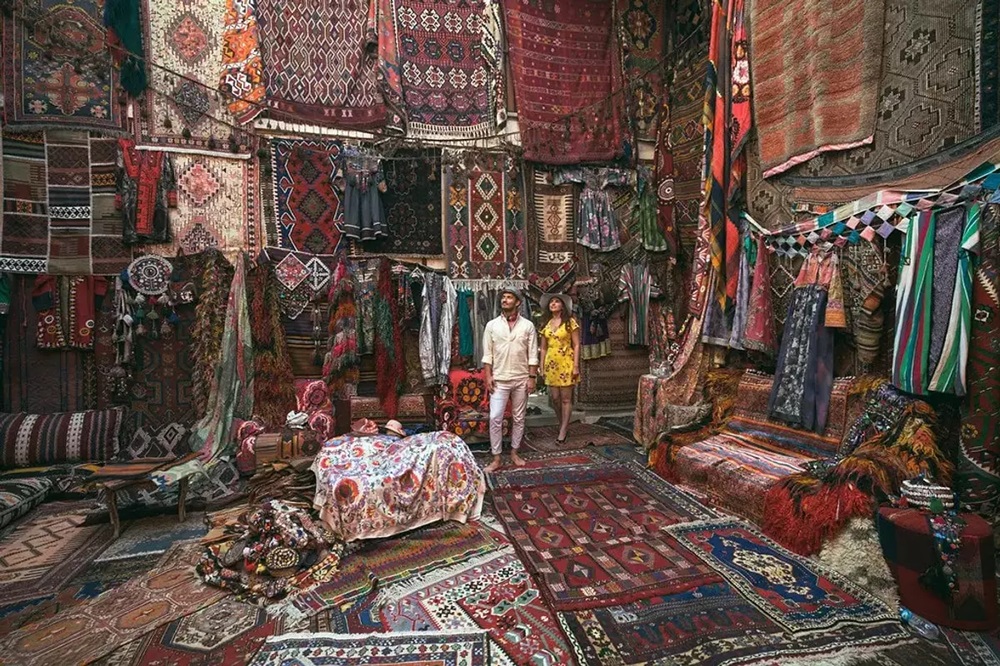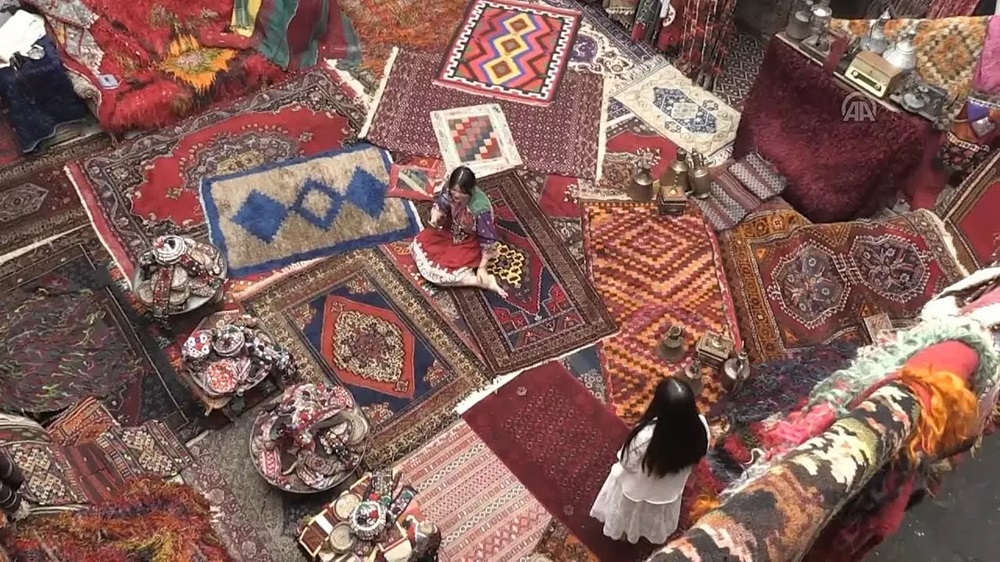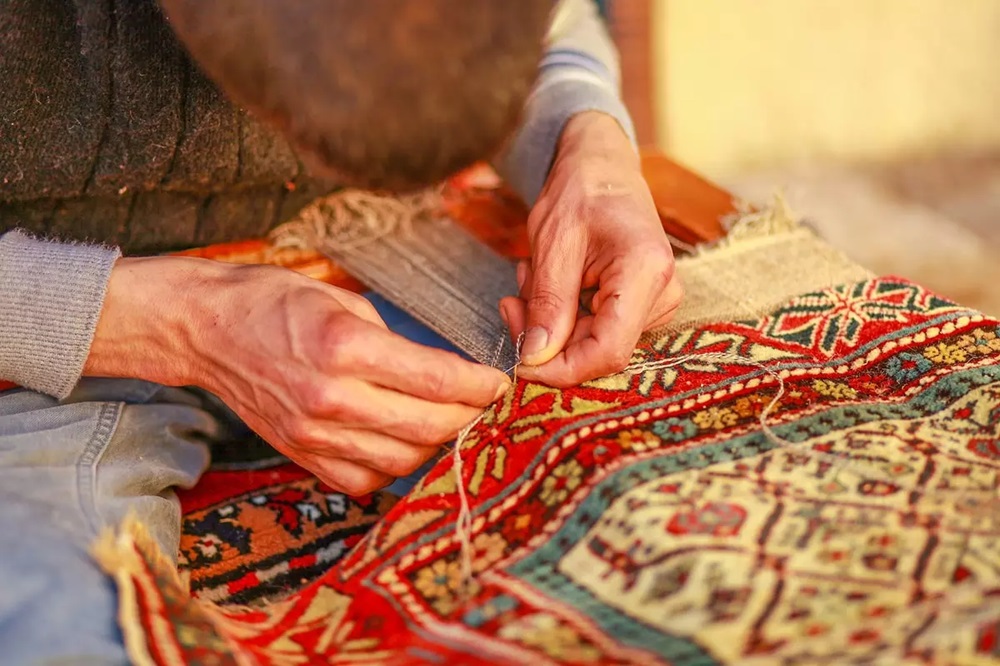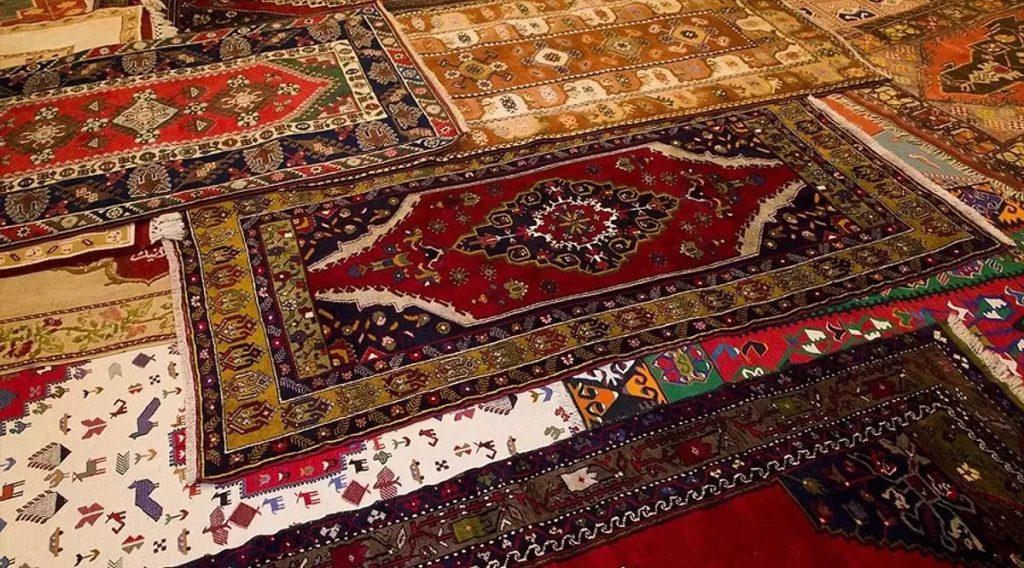Turkish carpets, sometimes called Anatolian carpets, are highly prized for their beautiful workmanship, vivid colours, and complex designs on a global scale. Turkey has a rich and ancient carpet-weaving heritage that dates back thousands of years.
Turkish carpet weaving has a long and illustrious history of thousands of years. The elaborate patterns and techniques of carpet weaving have developed over the ages, and the craft has been passed down through the generations. In addition to their practical use, carpets were emblems of luxury, social standing, and creative expression.
Turkish carpets are regarded as a kind of visual art. The patterns, colours, and designs frequently convey stories and have symbolic meanings. Turkey’s diverse regions are reflected in the unique carpet designs and weaving techniques that are unique to each one. Since many of these carpets are handcrafted, the artistry is greatly appreciated.
For many Turkish communities, carpets are essential to their cultural identity. They are handed down as heirlooms from generation to generation and are frequently used to decorate dwellings. The mats take on significance in the family’s past, preserving their makers’ customs and cultural identity. Turkish carpets are commonly utilised in rituals related to religion and culture. They are laid out on the ground during ceremonies, festivals, and special occasions. By connecting the past with the present, this utilisation gives the gatherings a feeling of cosiness and cultural depth.

Turkish carpets can carry superstitions and symbolic meanings. Some motifs and patterns are thought to represent different facets of life, fend against evil, or bring good fortune. These ideas give the rugs deeper meanings, elevating them above simple decorative objects. The economy of Turkey is significantly impacted by the manufacture and export of Turkish carpets; a common source of income for many households, particularly in rural areas, is carpet weaving. Turkish rugs are becoming a necessary export good due to their increasing demand worldwide.
Turkish carpets are one of the main draws for travellers. These rugs’ exquisite design and craftsmanship frequently entice visitors. Turkish carpets are popular gifts among travellers, which adds to the craft’s cultural and financial significance. Turkish carpets are woven into Turkish culture and symbolise creativity, history, and a sense of identity. They are more than just floor coverings. Carpets are essential to Turkey’s legacy because of their enduring cultural significance.
Turkey’s various regions each have their own unique carpet weaving techniques. Carpets from each area are distinguished by their patterns, colours, and designs. For instance, rugs from regions such as Hereke, Oushak, and Kayseri have unique characteristics.
Turkish carpets are renowned for having a wide variety of intricate designs. Common themes include geometric patterns, stylized motifs, and floral arrangements. These designs might change based on the area and the particular weaving style and frequently have symbolic and cultural connotations.
Particular Turkish carpets are made expressly for religious usage. Muslims use prayer carpets, or “Sajjada,” during their daily prayers. These carpets frequently have designs for the mihrab or prayer niche. These carpets are expertly made to provide a hallowed area for worship. Turkey’s carpet industry is particularly well-known in a few towns and regions. For instance, Hereke is well-known for its silk carpets, whereas Oushak is well-known for its enormous, room-sized rugs with eye-catching patterns. Turkish carpet art is distinctive and diverse because of the contributions made by each centre.
Motifs of Turkish Carpets

One of the most well-liked and often utilised designs in Turkish carpets is the rose motif, or “gül” as it is known in Turkish. It represents life, beauty, and love. The rose theme can appear in various ways, such as realistic or stylised depictions of flowers. Prayer carpets commonly feature the mihrab motif. It stands for the nook in mosques that shows the way to Mecca, the Muslim holy city. A prayer rug’s mihrab gives the worshipper a specific area to be in while praying.
The Elibelinde motif depicts two hands clasped on the hips, a typical position in Turkish traditional folk dance. It represents protection, women, and fertility. Weaved rugs for weddings or fertility celebrations frequently use this theme. Stars, known as “yıldız” in Turkish, are commonly utilised motifs, signifying spirituality, cosmic order, and defence against malignancy. The carpet can have stars placed in different configurations and sizes.
A motif known as “Çintamani” originated in Central Asian cultures and consists of three circles grouped in a triangle. It represents strength, power, and defence against evil. Rugs and fabrics from the Ottoman era frequently feature the theme. The theme of the ram’s horn denotes strength, power, and defence. It is commonly portrayed as a spiral or curled shape resembling a ram’s horn. This pattern is thought to fend off bad energy and provide good fortune.
Turkish carpets often have saz designs, which are patterns of reed leaves and flowers. These sometimes stylized features can arouse sentiments of growth, harmony, and nature; poetry and music can also be linked to themes in Saz’s artwork. Turkish carpets occasionally have dragon and phoenix motifs inspired by Chinese art. The dragon is a symbol of strength and power, and the phoenix is a symbol of rebirth and immortality. These patterns could be mixed with other cultural influences to make rugs.
Water-inspired motifs, such as waves and ripples, stand for continuity, life, and purity. Carpets from areas with proximity to water sources may have these patterns. A ubiquitous metaphor for growth, the bond between heaven and earth, and the cycle of life is the Tree of Life motif. It is frequently shown with fruits, leaves, and branches representing abundance and fertility.
How to Spot a Fake Turkish Carpet

Identifying a fake Turkish carpet can be challenging, especially given the intricacy of counterfeiting techniques. Genuine Turkish rugs are labour-intensive and need expert craftsmanship, especially when they are handcrafted. A warning sign is if the pricing looks too good to be true. Fine Turkish handmade carpets have an inherent worth, and if the price is much less than what you would expect, it might be a machine-made replica or a fake.
Wool, cotton, or silk are natural materials for traditional Turkish carpets. Examine the substance and give it a feel. Because natural fibres are used, authentic rugs frequently have a warm, fuzzy feeling. Conversely, mass-produced imitations frequently use synthetic materials. Genuine Turkish carpets are crafted by hand, often utilising age-old knotting methods. The Ghiordes (Turkish) knot and the Senneh (Persian) knot are famous. Look at the knots on the back of the carpet; handcrafted carpets will have some variances in pattern, but machine-made carpets may have a uniform and consistent pattern.






